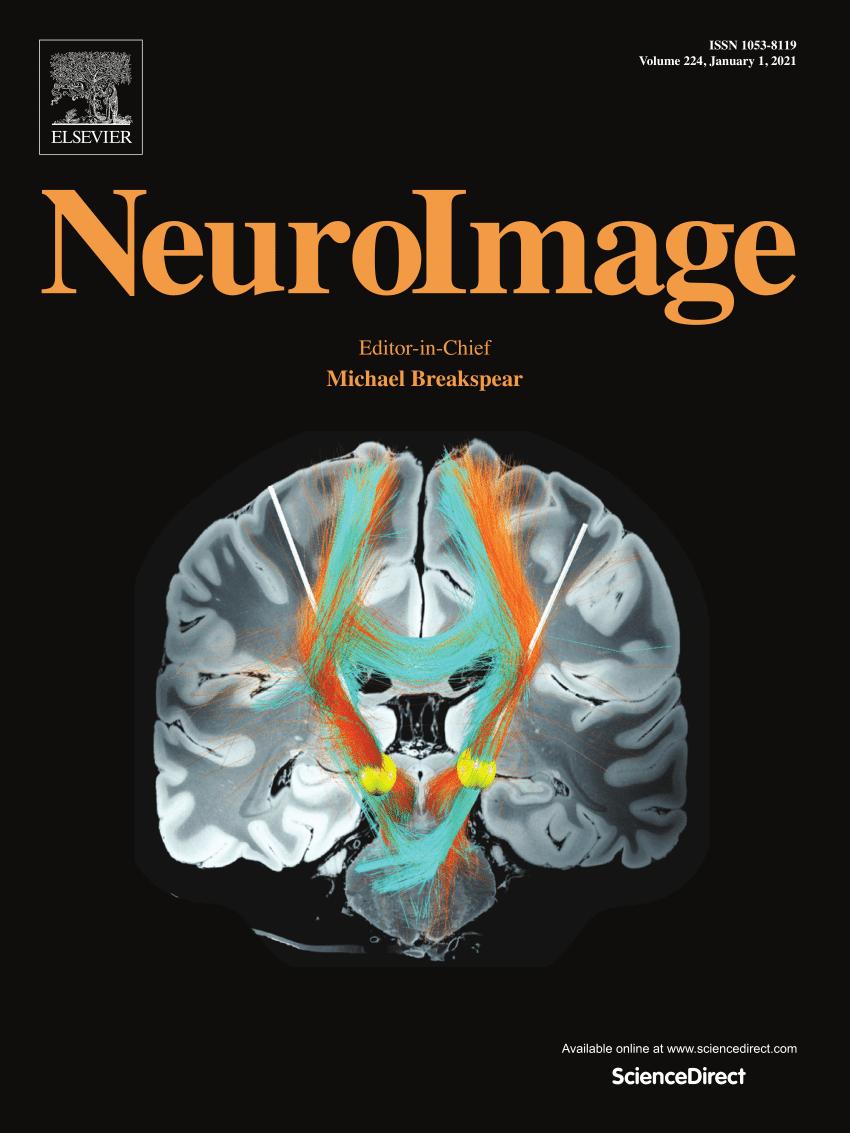Deep diffusion MRI template (DDTemplate): A novel deep learning groupwise diffusion MRI registration method for brain template creation
IF 4.5
2区 医学
Q1 NEUROIMAGING
引用次数: 0
Abstract
Diffusion MRI (dMRI) is an advanced imaging technique that enables in-vivo tracking of white matter fiber tracts and estimates the underlying cellular microstructure of brain tissues. Groupwise registration of dMRI data from multiple individuals is an important task for brain template creation and investigation of inter-subject brain variability. However, groupwise registration is a challenging task due to the uniqueness of dMRI data that include multi-dimensional, orientation-dependent signals that describe not only the strength but also the orientation of water diffusion in brain tissues. Deep learning approaches have shown successful performance in standard subject-to-subject dMRI registration. However, no deep learning methods have yet been proposed for groupwise dMRI registration. . In this work, we propose Deep Diffusion MRI Template (DDTemplate), which is a novel deep-learning-based method building upon the popular VoxelMorph framework to take into account dMRI fiber tract information. DDTemplate enables joint usage of whole-brain tissue microstructure and tract-specific fiber orientation information to ensure alignment of white matter fiber tracts and whole brain anatomical structures. We propose a novel deep learning framework that simultaneously trains a groupwise dMRI registration network and generates a population brain template. During inference, the trained model can be applied to register unseen subjects to the learned template. We compare DDTemplate with several state-of-the-art registration methods and demonstrate superior performance on dMRI data from multiple cohorts (adolescents, young adults, and elderly adults) acquired from different scanners. Furthermore, as a testbed task, we perform a between-population analysis to investigate sex differences in the brain, using the popular Tract-Based Spatial Statistics (TBSS) method that relies on groupwise dMRI registration. We find that using DDTemplate can increase the sensitivity in population difference detection, showing the potential of our method's utility in real neuroscientific applications.
深度扩散MRI模板(DDTemplate):一种新的用于脑模板创建的深度学习分组扩散MRI配准方法。
弥散磁共振成像(dMRI)是一种先进的成像技术,可以在体内跟踪白质纤维束,并估计脑组织的潜在细胞微观结构。分组配准来自多个个体的dMRI数据是脑模板创建和研究主体间脑变异性的重要任务。然而,分组配准是一项具有挑战性的任务,因为dMRI数据的独特性包括多维的、方向相关的信号,这些信号不仅描述了水在脑组织中的扩散强度,而且还描述了水在脑组织中的扩散方向。深度学习方法在标准的主体对主体dMRI注册中表现出成功的性能。然而,目前还没有针对分组dMRI配准提出深度学习方法。在这项工作中,我们提出了深度扩散MRI模板(DDTemplate),这是一种基于流行的VoxelMorph框架的基于深度学习的新方法,可以考虑dMRI纤维束信息。DDTemplate可以联合使用全脑组织微观结构和特定纤维定向信息,以确保白质纤维束与全脑解剖结构对齐。我们提出了一种新的深度学习框架,该框架同时训练分组dMRI配准网络并生成群体大脑模板。在推理过程中,训练好的模型可以用于将未见主题注册到学习模板中。我们将DDTemplate与几种最先进的注册方法进行了比较,并在不同扫描仪获得的多个队列(青少年、年轻人和老年人)的dMRI数据上展示了优越的性能。此外,作为测试平台任务,我们使用流行的基于束的空间统计(TBSS)方法进行种群间分析,以调查大脑中的性别差异,该方法依赖于分组dMRI配准。我们发现使用DDTemplate可以提高群体差异检测的灵敏度,显示了我们的方法在实际神经科学应用中的潜力。
本文章由计算机程序翻译,如有差异,请以英文原文为准。
求助全文
约1分钟内获得全文
求助全文
来源期刊

NeuroImage
医学-核医学
CiteScore
11.30
自引率
10.50%
发文量
809
审稿时长
63 days
期刊介绍:
NeuroImage, a Journal of Brain Function provides a vehicle for communicating important advances in acquiring, analyzing, and modelling neuroimaging data and in applying these techniques to the study of structure-function and brain-behavior relationships. Though the emphasis is on the macroscopic level of human brain organization, meso-and microscopic neuroimaging across all species will be considered if informative for understanding the aforementioned relationships.
 求助内容:
求助内容: 应助结果提醒方式:
应助结果提醒方式:


